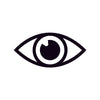HOW TO CURE DRY EYES | DRY EYE SYNDROME
Dry eye is a multifactorial disease of the tears and ocular surface. Dry eye is a chronic progressive condition, if left untreated it will become worse over time leading to further lacrimal and meibomian gland dysfunction. Symptoms include discomfort, irritation and decrease in clarity of vision. It is accompanied by inflammation of the ocular surface.
What causes dry eyes? Environmental factors can play a role in increasing the rate and severity of dry eyes, these include lower relative humidity, modern air-conditioned office, use of computers and contacts can cause dry eyes as well. With computer use some people have a reduced blink rate which causes the eyes to dry. Other factors that can contribute to dry eyes include Sjogren's Syndrome, lid congruity, meibomian lipid deficiency, blinking insufficiency, drug preservatives, contact lens wear, Vitamin A deficiency and allergic eye disease.
Dry eye causes are usually divided into two types –
- 1. Caused by excessive evaporation.
- 2. Caused by lack of aqueous in the tear film.
How to cure dry eyes permanently by Optometrists will depend on the cause and severity of the dry eyes. Symptoms might only be manageable and not curable and in some instances dry eye is permanent. Ocular lubricants remain the most widely recommended treatment for managing dry eye symptoms. If you experience this condition, it is recommended you see your Optometrist and the consultation can help determine what the best eye drop is. For overnight use, ointment works better. Environmental modification such as adjusting humidity levels will also help.
If inflammation is present, topical steroids and nutritional supplements such as Omega 3 fatty acids are recommended. In more severe cases punctal plugs, topical Vitamin A and moisture goggles can be used. If there is any meibomian gland dysfunction, warm compresses and lid massage are useful. If there is any blepharitis present lid hygiene with antibacterial therapy is recommended.
By John H.
Optometrist at 1001 Optical
Need an eye test? BOOK NOW


